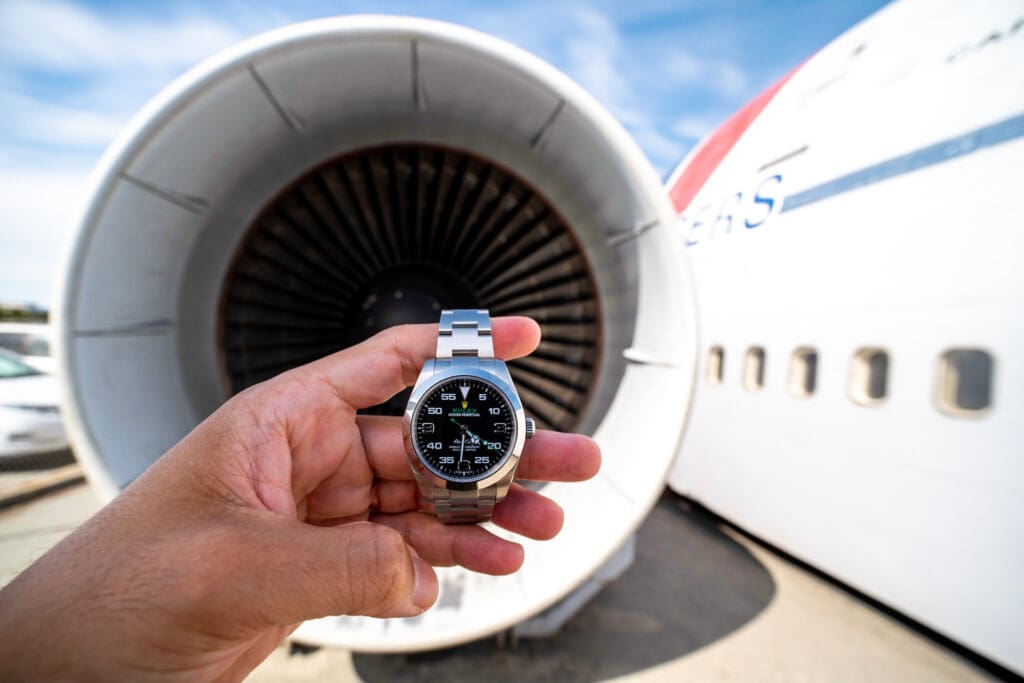
When the Rolex Air-King reference 116900 was released at Baselworld 2016 the consensus from “watch instagram” and other watch social media channels was that it was the ugliest watch of the Rolex line up. The odd dial layout and combination of yellow and green color was unique to this model. It never caught the attention of the public in any way similar to the other sports models.
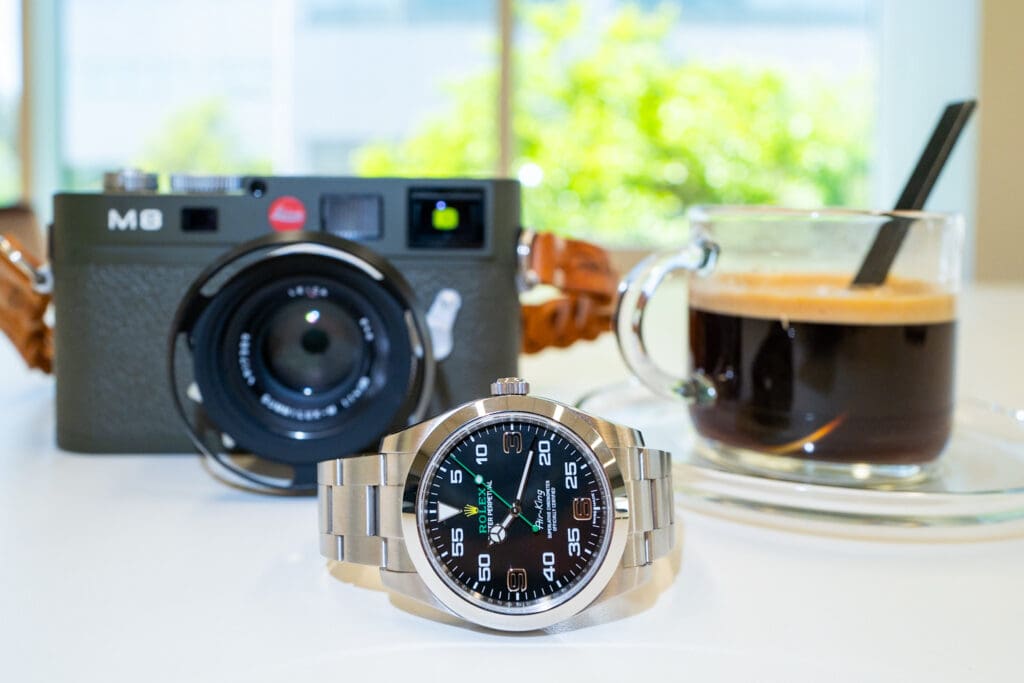
However, astute collectors knew immediately that these types of odd designed models from “The Crown” tend to be collectible in the future. This is especially true when the model is then discontinued. A great example of a similar scenario is with transitory Daytona models of the 60s and 70s and more recently the short lived colorful Oyster Perpetual models. Since Rolex released an updated version of the Air-King in 2022, is the old 116900 a future collectible? And more importantly why should you pay attention to this entry-level Rolex sports model and why it has a permanent place in my work weekly-watch rotation.
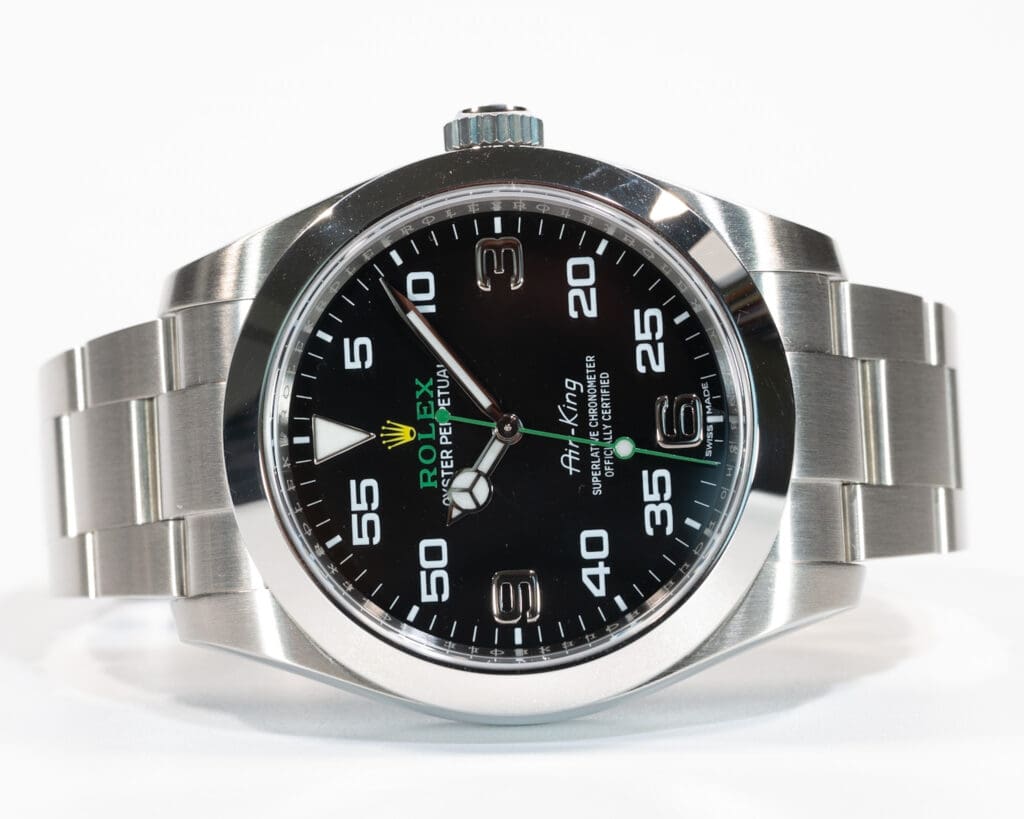
Rolex claims the Air-King was created to pay tribute to 1930s pilots. As aviation was becoming the most important invention of the first two decades of the 20th century, pilots had to rely on precision timepieces to navigate. With the second world war on the horizon, pilots that could be nimble and navigate with precision would be of paramount importance to the direction of humanity’s future.
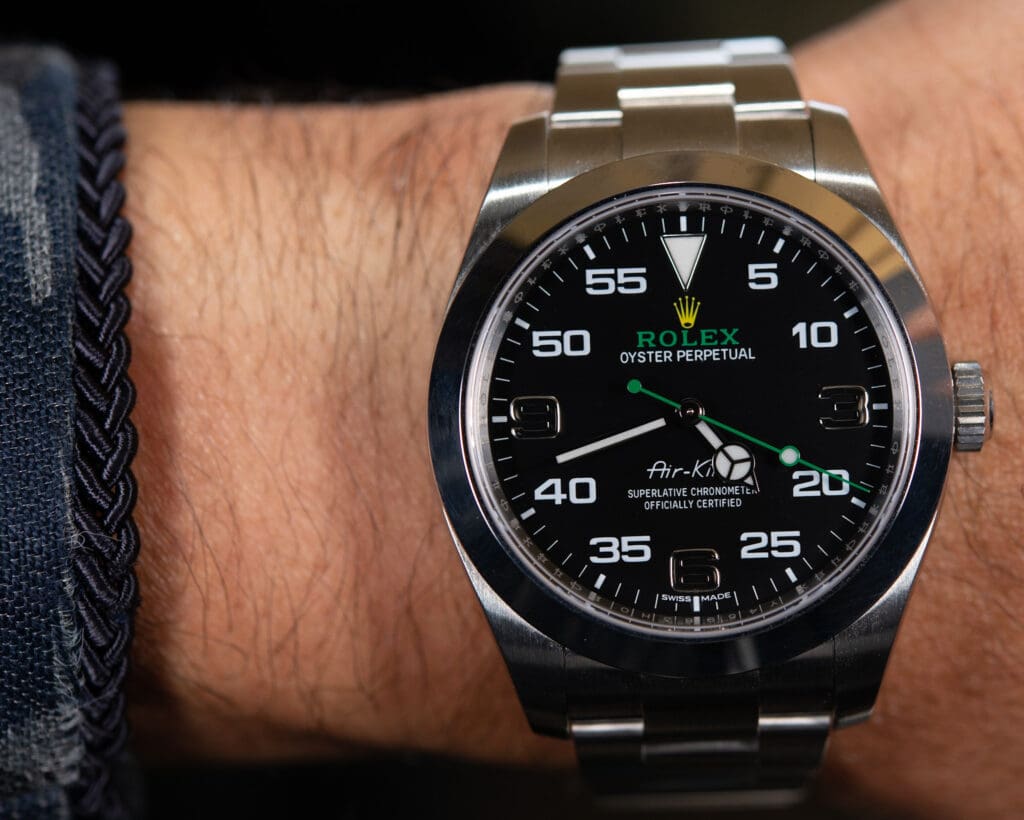
While Rolex did not release a flieger watch, in the style of IWC, Bréguet, and others, Rolex watches adorned the wrists of WWII pilots and this watch is a tribute to that time. In 1945, when first released, the models resemble small variations of the classic oyster models. This 116900 variation was the first one where Rolex used the mixed minutes markers combined with the classic Explorer 3-6-9 hour numerals. The yellow and green coloring on the dial further make this model stand out.
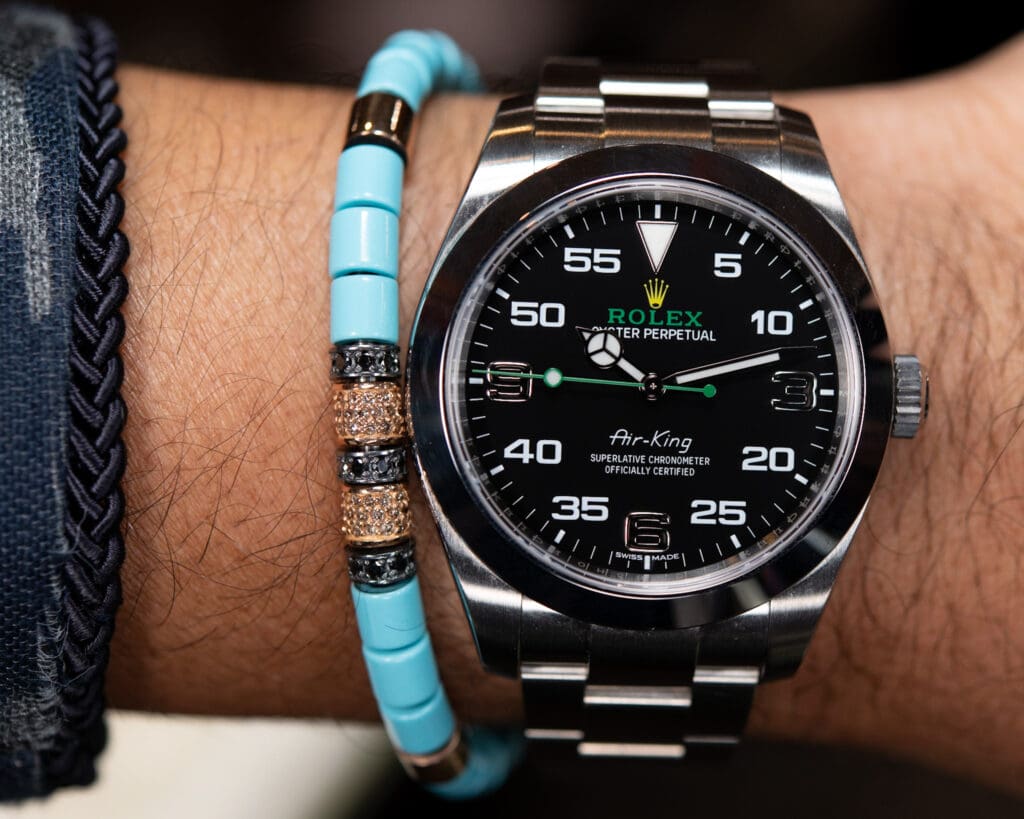
The Air-King has a permanent place in my work watch rotation because of its low-key style and the splash of color on the dial. At 40 mm wide and just a little above 13 mm high with lug-to-lug of 49 mm, this is an infinitely wearable watch. The brushed oyster case and bracelet with polished bezel make it understated. The coloring on the dial gives it character and makes it fun to wear. It’s a relatively rare watch, and I have yet to encounter someone wearing it while I am in the wild. And I wear it at least 4 to 5 times a month on average.
But for me the reason it’s perfect for work is the weight and how well it wears at a stretch. At just 150 grams it sits perfectly on my 6.5 inches wrist and the easy to access (no flip lock) easy link makes it a breeze to adjust with one hand and without even having to remove my left hand from my keyboard. It’s the perfect day-to-day work watch.
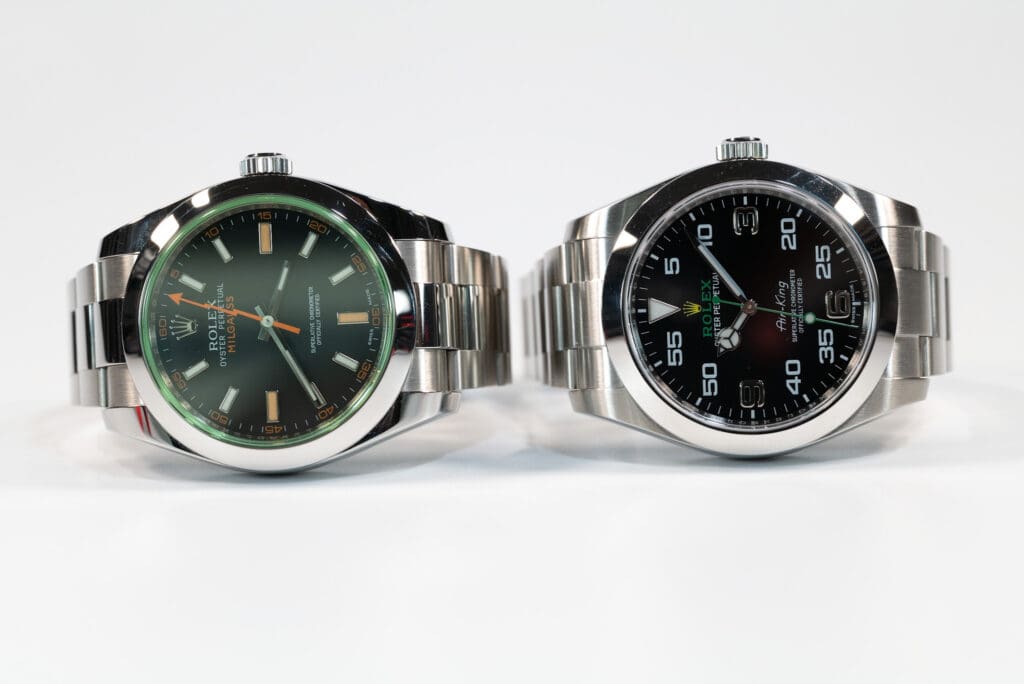
While the Air-King is often compared to the now discontinued Milgauss, since they use the same case shape and movement; the two watches are in effect different. In particular, the Milgauss has polished center links and a unique dial and second hand that make it stand apart from all other Rolex watches or any other watches in that class. A more apropos comparison in the Rolex lineup is to the Explorer which Rolex has had in production since 1953.
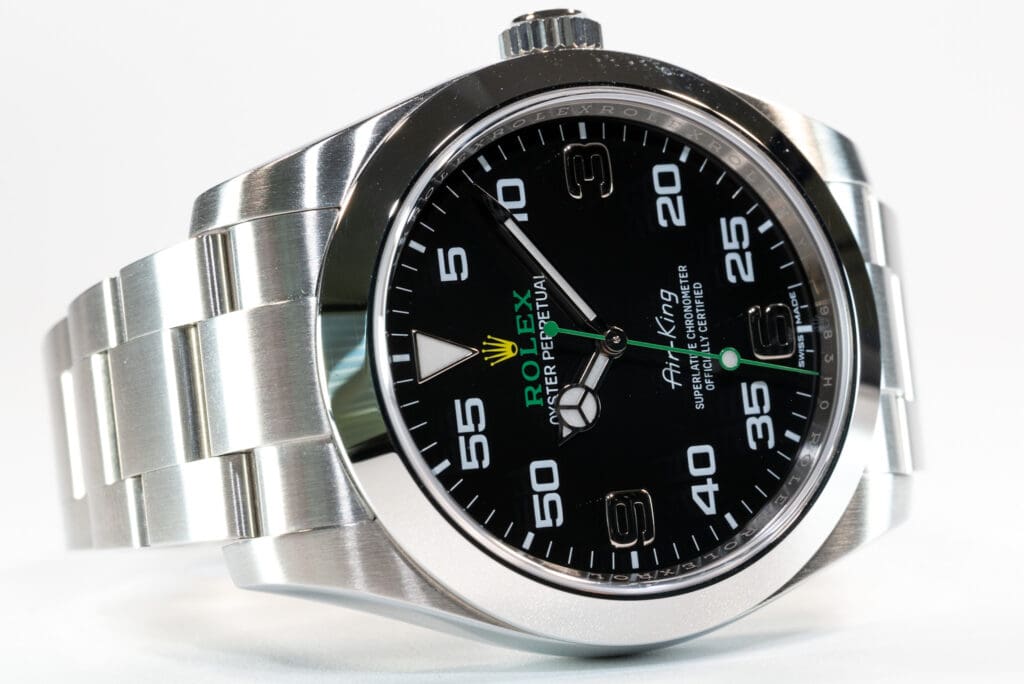
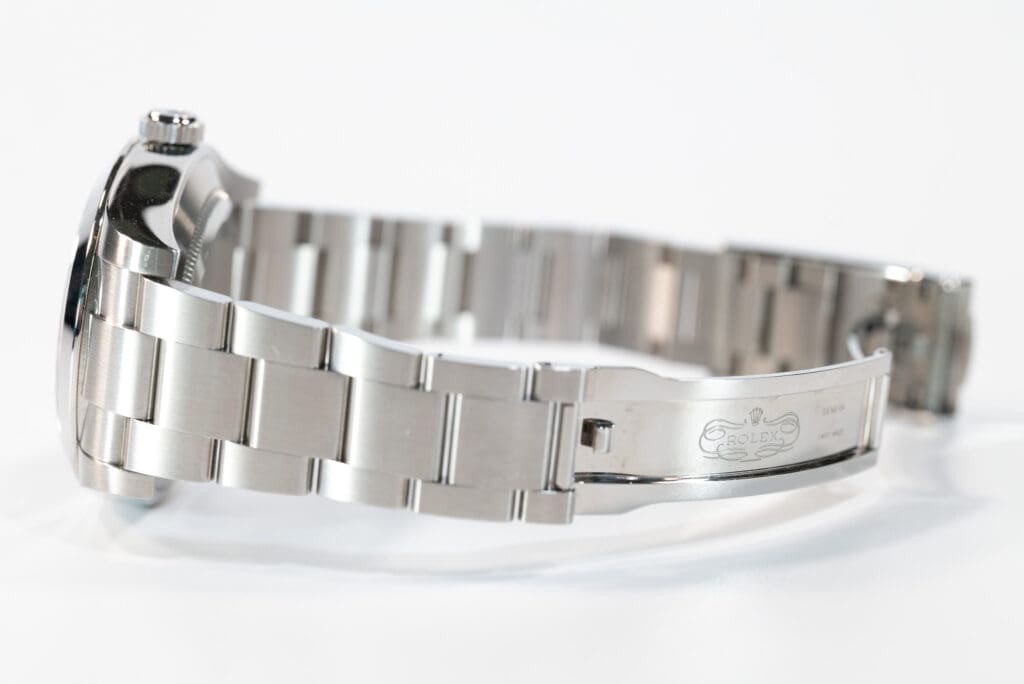
And from the moment it was released, the Air-King has indeed been compared to the Rolex Explorer. The fact that the Air-King dial is an extension of the classic 3-6-9 Explorer dial guaranteed that comparison. However, if you take a closer look, you will notice that the Air-King has a series of additional unique features that separates it from the Explorer. The colorful crown on the dial and the green Rolex mark make it standout.
The subtle green second hand, and the unique script that it uses for the model name gives the Air-King its own charm. The white gold 3-6-9 hour marks shine like the long running Explorer 114270. From afar, you could not fault one for thinking the Air-King was a special Explorer I model. But it’s not and the white minutes markers help make that differentiation.

As a pilot watch, how does the Air-King compare to the classic Flieger watch design? For instance, the prototypical model from IWC, the recent Mark XX, and previous iterations of that model. In short, they are different watches. Rolex’s pilot watch does not follow the design language that the IWC Pilot and many other pilot watches have used over the years. The only similarity is the inverted triangle at 12 o’clock and, as a stretch, the legible minute’s markers that Rolex uses across the dial and that make an important part of the generic Flieger design.

There are a few things I dislike about this watch. But if I had to pick one to highlight it would be the lack of luminescence on the dial — only the inverted triangle at 12 and the hour and minute hands light up at night. The new model fixes this issue by adding Rolex Chromalight on the 3-6-9 Explorer-like markers. This is in keeping with that same change in newer versions of the Explorer. Besides its quirky dial coloration, the thing I appreciate the most of the Air-King is its odd dial layout and brushed finishing. In particular, I find it easy to wear: no need to worry about the date.
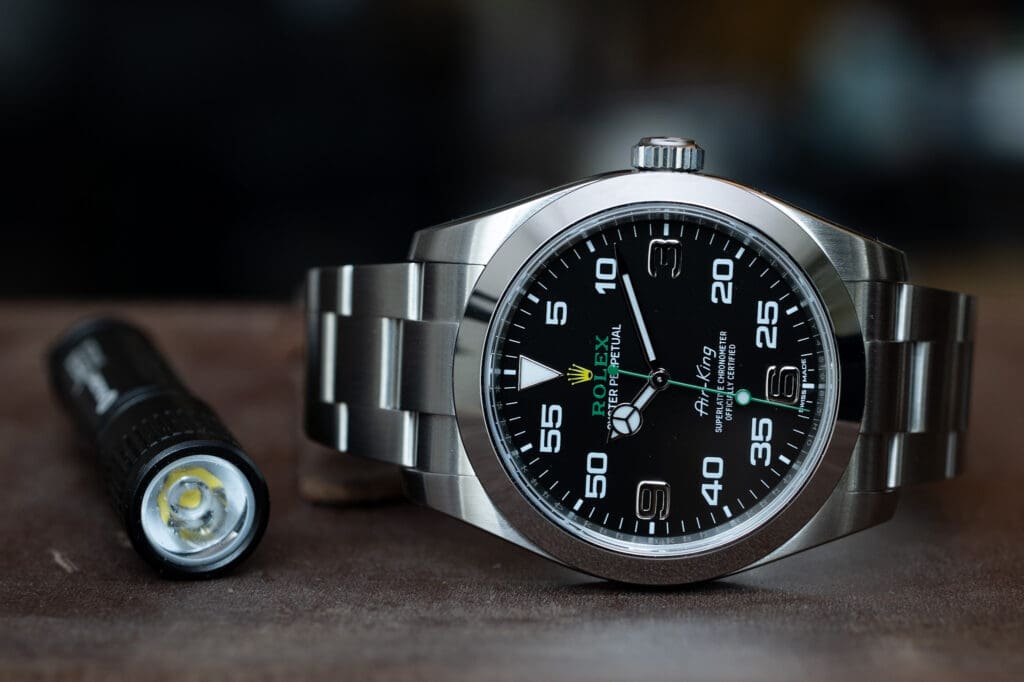
As I mentioned before, the Air-King constitutes a core part of my work-watch rotation. Its readable dial and simple design mean I can use it for client meetings or when meeting with colleagues or to keep time during work hours. It’s understated while being different enough that it’s rare and does not have the “I am wearing a Rolex” vibe that one can project with Rolex’s other models (e.g., Submariner or GMT Master II). As an entry-level model, it’s as good as it gets: versatile, rare, affordable, and quirky. It’s the perfect day-to-day Rolex.

About the Gear
As in all posts in this series, all the photos are original and shot mostly with Leica cameras with an assortment of Leica lenses and other macro lenses adapted to the L-mount. The wide angle environmental shots like the ones in front of the airplanes and helicopter were taken with Leica SL2-S and the Laowa 15mm Macro wide angle manual lens.

The tabletop and macro shots were taken with Leica SL2 with Sigma’s 70mm f/2.8 DG Macro lens as well as Leica’s 60mm APO-Macro-Elmarit-TL f/2.8 lens on the SL2. And the tabletop shots that include the Leica M8.2 and the SL2-S were shot with the Leica QP, which remains an essential and versatile second camera in my kit.
Michael Maximilien



